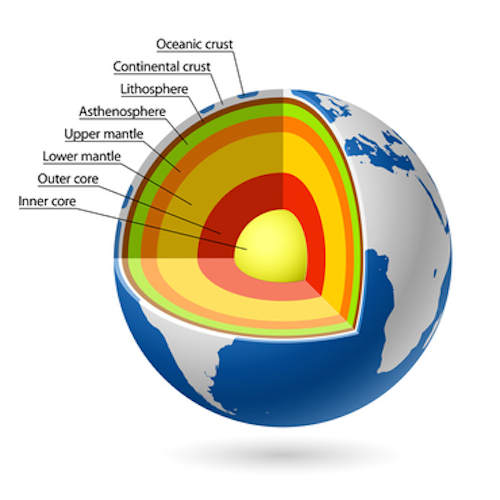.

There’s a surprise lying deep beneath your feet. Physicists have calculated that the centre of the Earth is two-and-a-half years younger than its surface, thanks to the effects of gravity as described by general relativity.
According to Einstein’s theory, your position in a gravitational field changes the rate at which you experience time passing. The idea has been rigorously tested and has an impact on GPS satellites. But the time differences involved here are normally fractions of a second, not a couple of years.
Ulrik Uggerhøj of Aarhus University in Denmark and his colleagues realised the effect would be much more pronounced for Earth after re-examining a claim made by physicist Richard Feynman in the 1960s. In a series of lectures, Feynman claimed that the difference in age between the Earth’s centre and surface was about a day or two – a figure often repeated and cited in papers by other physicists, including Uggerhøj.
But when Uggerhøj recently decided to include the anecdote in an undergraduate textbook, he sat down to check the figure himself. The calculation involves working out the difference in gravitational potential – a measure of the work done by gravity in moving a mass from one location to another – between the centre and surface.
Young at heart
Plugging this difference into the equations of relativity gives a time dilation factor of around 3 x 10-10, meaning every second at the Earth’s centre ticks this much slower than it does on the surface. But since the Earth is around four billion years old, the cumulative effect of this time dilation adds up to a difference of around a year and a half.
These calculations assume a uniform density throughout the Earth, which we know isn’t accurate since the core is denser than the mantle. Using a more realistic model of Earth’s density, Uggerhøj’s team found the difference in age is actually around two-and-a-half years.
Of course, we can’t confirm this number experimentally, says Uggerhøj. But general relativity has passed every test thrown at it so far, so it seems likely to be correct. And since, as far as we know, the theory operates throughout the universe, the same effect occurs for any massive body. The team calculates that the centre of the sun is around 40,000 years younger than its surface.
Uggerhøj says it is unclear whether Feynman made the error originally, or whether the transcription of his lectures somehow garbled “days” into “years”, but he says it pays to take nothing for granted. “One should always be cautious and test even famous people’s suggestions,” he says. “I fell into the trap of not doing it, I must admit.”
Quelle: NewScientist
5345 Views
